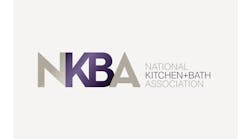by Mike Murphy
special to CONTRACTOR
According to research studies presented by Burnham Hydronics at the First Hydronics Roundtable, held April 30 in Washington, the residential replacement market has carried the sales of hydronic equipment. That growth seems steady. However, significant movement in the residential new construction market could help immensely.
One of the key points in the mission of the roundtable discussion was to grow the awareness of heating applications with respect to comfort and efficiency in the new housing market.
The big question on everyone’s mind was: “What will it take to substantially grow that market?”
If the hydronics market were to capture just 1% more of the new home construction market (1.705 million housing starts in 2002) everyone in the hydronics business would be a lot happier. However, just 1% more is no small task.
Hydronics Roundtable moderator Bob Miodonski, publisher and editorial director of Contractor asked, “Isn’t it true that if a contractor can talk directly to the homeowner, he can make the sale?”
“Yes, they can sell snow to an Eskimo,” replied Kevin Sossin, vice president and general manager of Blackman, a Long Island, N.Y., wholesaler amid a room of laughter.
However, it’s a commonly held belief that builders often keep the contractor away from the homeowner because they are fearful of losing a perhaps already financially maxed-out customer. Jim Eisenbeis, director/marketing for Burnham Hydronics, honed in on the pricing issue at that point.
“If the option of stepping up to a hydronic system vs. warm air is too expensive, what happens?” he asked.
Rich Goelz of Steiner Mechanical Plumbing in Long Island, N.Y., inferred that it may depend upon the buying behavior of the consumer.
“In the under $500,000 housing market, homebuyers are usually financially stretched thin,” Goelz said. “They can’t really afford to spend $5,000 or $6,000 more for hydronics.”
If Goelz is correct, further study into the average purchase price of homes using hydronics comfort systems might help this segment of the industry better target potential purchasers. For instance, if customers for homes in the price range of $500,000 to $750,000 aren’t on as tight a budget as purchasers of smaller homes, then gaining 1% of the new home construction market may take on new meaning.
Yet, every market is different. Some panelists suggested that other factors, regardless of the size of the home, may be more important in affecting hydronic sales.
Mike Michel, vice president/marketing of R.E. Michel Co. in Glen Burnie, Md., believes that changing home builders’ behavior is needed.
“Somehow, we’ve got to develop a value proposition that creates a significant difference for the builder, with hydronic products, that can set him apart from his competition,” he said. “That value proposition must result in more sales for the builder and show the builder how they can become more profitable.
“Once we successfully educate builders, educating homeowners becomes much easier.”
Not everyone agreed with that viewpoint.
“I believe that many homeowners already feel that hydronic systems are better than forced air,” Sossin said. “If the homeowners’ perceptions were impressed upon the builder, then I think we’d see a change.”
Cooling complications
Regardless of the starting point for educating the market, all panelists agreed that hydronic growth in the new construction market is stymied because of the need to address air conditioning as well as heating.
Ray Spencer of Spencer Masterpiece Homes in Fort Collins, Colo., shared his views on the cost of hydronics systems.
“When you compare a basic forced-air package, including air conditioning, to a hydronics package and still include the air conditioning, the latter combination usually costs 212 to three times as much,” he said. “So it is significant.”
Miodonski clarified with Spencer that this price difference referred to radiant hydronic systems. It’s quite common for price comparisons to be made between high-sizzle radiant systems and basic forced air, rather than one of the intermediately priced hydronic options.
A common misconception among homeowners and builders my be that all hydronic options are much more highly priced than is the case.
“Builders don’t consider radiant heating as a basic neccessity in the type of homes they’re currently building,” Spencer said. “Homeowners vote with their checkbooks, and we see them consider options such as radiant heat as wish list items, something they want after all the basic needs are met. We work with customers to solve their basic needs first and then accommodate as many items on their wish list as possible.
“I think there is a middle ground available to homeowners. People would be interested in getting some radiant or hydronic heating features while not paying 212 or three times more.”
Selling the comfort
Spencer believes a retail point-of-sale approach may be much more common among HVAC contractors installing forced-air systems than plumbing and heating contractors that typically install hydronic systems. He suggested that more direct contact from the contractor to the owner could be beneficial for aiding hydronic sales.
Need an expert
“It’s great to be able to impress your client by taking them to an expert within a certain field, whether it be flooring, plumbing or whatever,” Spencer said. “Our HVAC contractors (who promote forced-air systems) tend to have showrooms where they demonstrate the products that they offer. The homeowner always comes back with a checklist of things they’d like to add to their new home.
“The salesperson in the HVAC company handles everything. It takes a little of the workload off of me and demonstrates my integrity by working with a professional contractor. It’s a win-win because I have a more satisfied customer and the contractor has an opportunity to sell him or her a better product.”
Contractors, distributors, builders and manufacturers have already proven to millions of homeowners that hydronics systems can provide unmatched comfort, the panelists agreed. The task ahead may be to prove that hydronic heating is indeed an affordable, better product, as suggested by some of the panelists at the roundtable.
There are myths about how hydronic and forced air systems compare in price. Even greater myths abound about the ability to effectively provide cooling with a hydronic system.
In an upcoming issue, our next installation of the Hydronics Roundtable will delve into hydro-air systems — the cooling side of hydronics.
Mike Murphy is editor-in-chief of Contracting Business magazine, a sister publication of CONTRACTOR.

